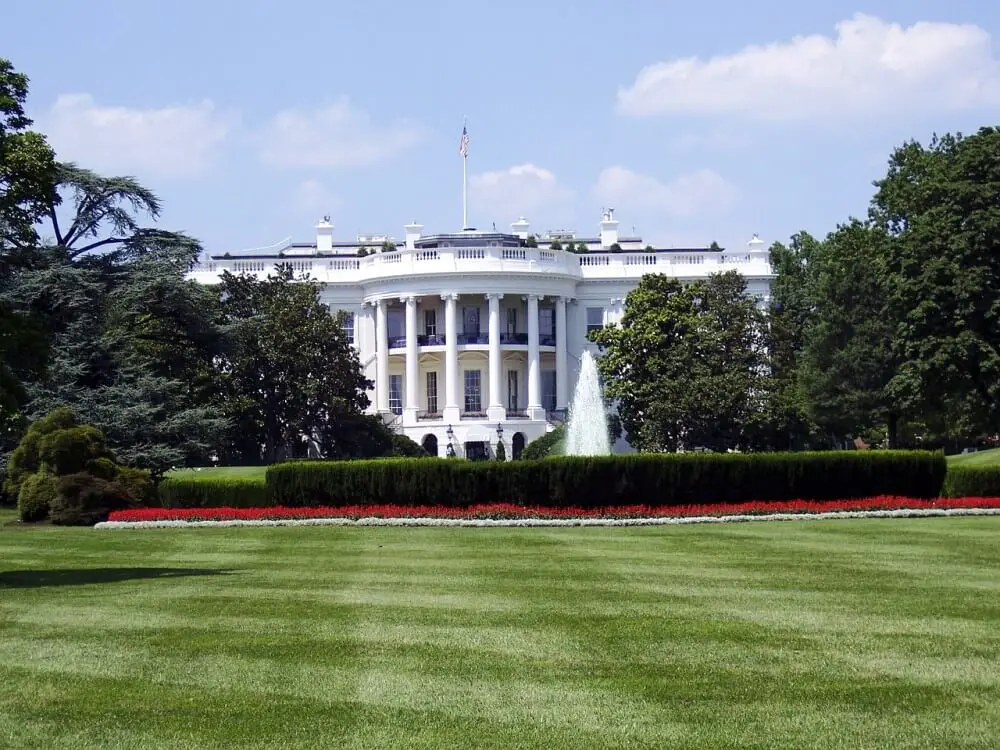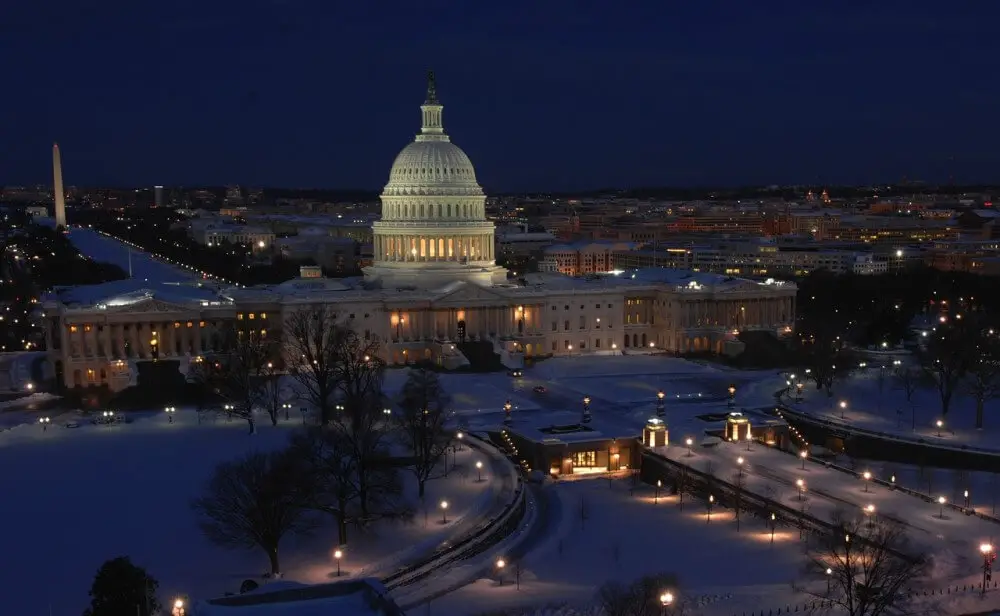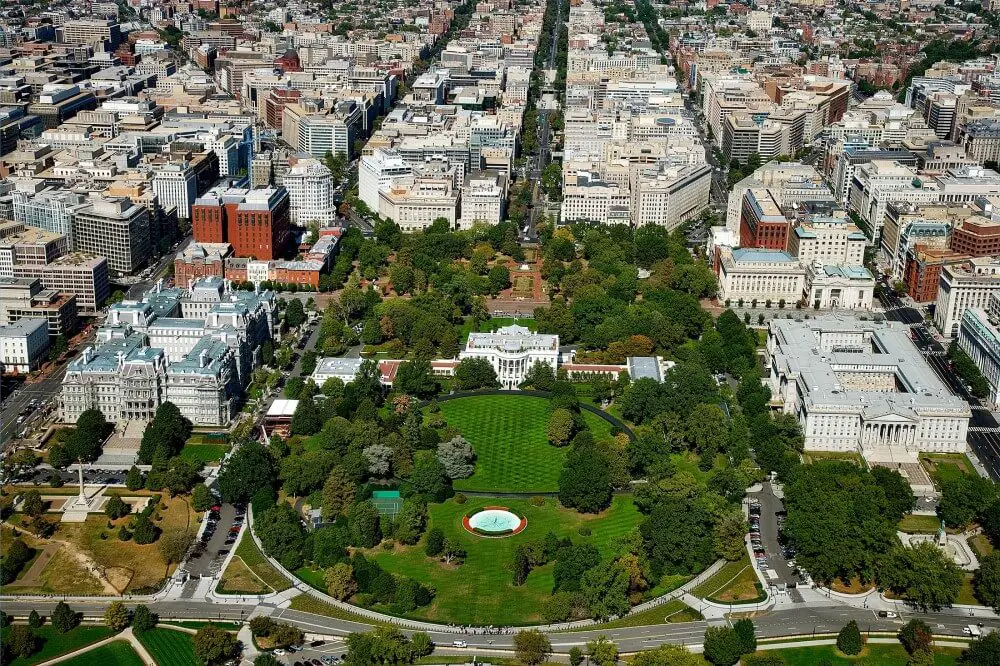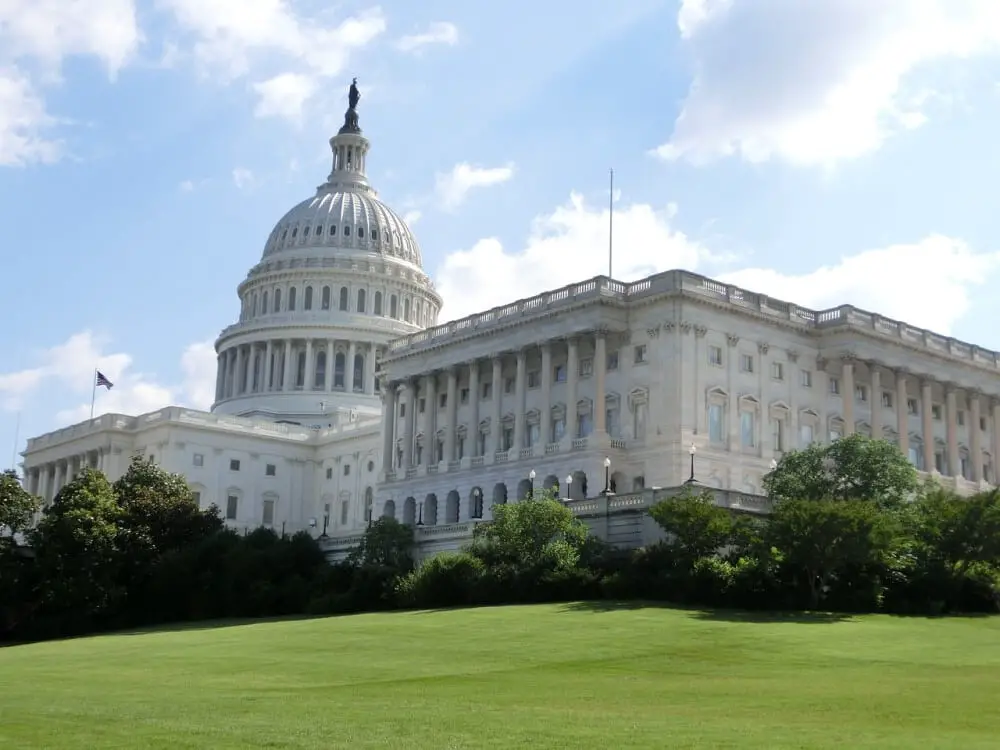As two of North America’s biggest symbols of democracy, the White House and Capitol Building have each developed an iconic status. Respectively, they hold historical, political and societal significance on a level above most other structures worldwide.
But despite their similarly sizable stature, both physically and figuratively, there are many distinctions between the two. These span everything from their usage and history to their physical characteristics and cultural significance.
With this in mind, let’s explore the intriguing differences between the White House and Capitol Building.
Explore our related articles:
Top 20 White Elephant Construction Projects Around the World10+ Amazing L Shaped Buildings from Around the World
25+ Amazing Facts about Battersea Power Station
What is the Tallest Building We Could Build?
Would it be Possible to Build the Pyramids Today?
Which Current Buildings will Last the Longest?
Top 15+ Longest Buildings in the World
Why is a Building Called a Building if it's Already Built?
Usage
First on our list of differences between the White House and Capitol Building is the different way each building is used. Both structures have a defined purpose, which not only shapes the way each runs but also how it was built in the first place.
On one hand, the White House serves as the official residence and workplace of the President of the United States. It is a symbol of the executive branch, where the President conducts executive functions, hosts official events, and makes important decisions that shape the nation’s policies.
In contrast, the Capitol Building is dedicated to legislative functions. It houses the United States Congress, consisting of the Senate and the House of Representatives, as well as office space for lawmakers, committee rooms for hearings and meetings.
Perhaps most importantly, the Capitol Building houses the legislative chambers, which is where bills are debated, amended, and voted upon. As such, it represents the entire legislative branch and, more widely, the country’s democratic process.
So, to put it simply, the White House is where you’ll find an emphasis on executive functions carried out by the President. Whereas, the Capitol Building is where elected representatives participate in shaping the nation’s laws.
History
For hundreds of years, both the White House and Capitol Building have carved out a momentous history for themselves. Countless historically significant events have both directly and indirectly involved the buildings, leading from their inception right up to the present day.
Perhaps the most famous event directly involving both buildings was the burning of Washington by the British during the War of 1812. Here, British soldiers stormed Washington City and, following victory over the US forces in the Battle of Bladensburg, set fire to both the White House and the Capitol Building.
However, this event aside, the White House in particular is known more historically for the illustrious people it has hosted and provided for, rather than individual events. It has been home to numerous presidents and their families, with each leaving their mark on the building through renovations, expansions, and personal touches.
And, pertinently, it’s the place where each president had to make decisions with far-reaching impacts on societal, political and economic history. As such, it has become an iconic symbol of the power of the presidency in the US, and by extension representative of the American constitution.
The Capitol Building, meanwhile, is equally historically significant, but for different reasons. Its two wings, which comprise the House of Representatives and Senate, have held lawmaking sessions since 1800, and have ever since have been the backdrop for significant legislative decisions, debates, and the passage of landmark legislation.
Meanwhile, the Capitol and its surrounding complex have been the site of many famous events, such as presidential inaugurations and State of the Union addresses. It has also experienced many moments of turmoil, with the January 6th 2021 Capitol Attack being a notable recent example.

Size
One of the most fundamental and obvious differences between the White House and Capitol Building is their respective sizes. Put simply, the Capitol Building dwarfs the White House in almost every measure.
On one hand, the White House, with its iconic presence on Pennsylvania Avenue, covers an area of approximately 55,000 square feet. The building consists of six levels, including the basement.
But while it may appear relatively compact from the exterior, the White House boasts a considerable amount of interior space. It encompasses various rooms and areas, including living quarters for the First Family, offices for the President and their staff, and reception rooms for official events.
Still, even with this indoor space, the Capitol Building dwarfs the White House in terms of sheer scale. Spanning an impressive 1.5 million square feet, the Capitol Building comprises five levels, including the basement and sub-basement.
As well as the chambers of the Senate and the House of Representatives, the Capitol Building also boasts committee rooms, libraries, and offices for members of Congress. With an expansive interior and sprawling footprint, the Capitol Building represents the magnitude and scope of the legislative branch’s operations.
Let’s take a closer look at the size difference between the White House and Capitol Building.
| White House | Capitol Building | |
| Square Feet | 55,000 | 1.5 million |
| Rooms | 132 (approx.) | 540 (approx.) |
| Height | 70 feet | 289 feet |
| Width | 168 feet | 350 feet |
| Length | 85 feet | 751 feet |
Public Accessibility
If you’re thinking about taking a trip to either the White House or Capitol Building any time soon, you may want to think about the next difference between the two. That is, that they differ markedly in terms of public accessibility.
Due to the great need for maintaining the President’s security and privacy, public access to the White House is generally restricted to limited private tours. Often, the only way to arrange these is either through an embassy or consulate, or through a Member of Congress and their Congressional Tour Coordinator. Tours are free of charge and apply on a first come first served basis.
However, it’s important to note that the availability of tours can be subject to change based on security measures and the President’s schedule. During the tours, visitors are allowed to explore designated areas of the White House, providing a glimpse into its history, architecture, and iconic spaces.
The Capitol Building, meanwhile, offers the public much greater options for visitation. As a prominent symbol of democratic participation, it places a strong emphasis on public engagement in a way that the White House, as a private residence, simply does not.
There are multiple ways for the public to explore the Capitol Building, with public tours running all year round. The U.S. Capitol Visitor Center is the main entry point for visitors, where they can obtain information, access exhibition halls, and join guided tours led by knowledgeable guides.
These tours typically include visits to the historic Rotunda, Statuary Hall, and other notable areas. Public galleries are also available in the chambers of the Senate and the House of Representatives, allowing visitors to observe congressional proceedings, subject to availability and specific rules.
It’s important to note that both the White House and the Capitol Building have security protocols in place to ensure the buildings are kept safe. Visitors to both locations are required to pass through security screenings, which may include bag checks and metal detectors.
Architectural Characteristics
The next difference in our White House vs Capitol Building assessment concerns their respective architectural characteristics. While both buildings are objectively iconic for their structural and aesthetic design, there are many distinctions.
Firstly, building work on the White House began in 1792, with the structure influenced by neoclassical architecture. Its façade features columns, a prominent portico, and large windows. The building’s sandstone walls and white paint, in particular, were employed at the design level to give the structure a stately appearance.
The original design by James Hoban, influenced by European classical architecture, has been expanded and modified over the years. But, to this day, the White House’s architectural details continue to create a sense of grandeur and evoke a connection to the nation’s history and ideals.
Meanwhile, construction on the Capitol began in 1793 and finished in 1800. The grand structure, which was designed by architect William Thornton, has undergone several significant expansions and renovations in the years since, with the last one finishing in 1962.
Although both buildings stem from the neoclassical influences, the Capitol Building boasts more prominent examples of both the Ancient Roman and Greek architectural style than the White House. This is evident with its exterior, which is characterised by columns, arches, and ornate detailing.
Adding to this sense of grandiosity is its sprawling layout, with wings extending symmetrically from the iconic 288-foot tall central dome. And, inside, the building features magnificent chambers, vaulted ceilings, and ornamental artwork that reflect the historical and artistic significance of the legislative branch.
Iconic Features
In a similar vein, it’s also notable that both the White House and Capitol Building have distinctive features that mark them from each other .
The White House’s most recognizable feature is its south portico, which features a grand staircase leading up to the main entrance. This portico, with its imposing columns and elegant design, has been the backdrop for countless historic events, presidential addresses, and public appearances.
Meanwhile, its east and west wings, which were added during later expansions, are also iconic elements that contribute to the building’s overall appearance. The Oval Office, located in the West Wing, holds particular significance as the President’s primary workspace and has become synonymous with the power and authority of the presidency.
Conversely, the Capitol Building has plenty of iconic features of its own. For one, its majestic dome stands as an iconic symbol of American democracy. The dome, constructed of cast iron and crowned with a statue of Freedom, is a striking visual element that features prominently on the Washington D.C. skyline.
In its interior, famous spaces in the Capitol Building include the Rotunda, with its impressive frescoes, and the National Statuary Hall. The latter is renowned as being the place where each state is represented by a statue.

Security
Another key difference between the White House and the Capitol Building is the level and type of security found in both places. While both structures are guarded heavily, there are distinctions in the ways each prevents threats and incursions.
The White House, as the residence and workplace of the President, requires particularly stringent security measures. It is heavily guarded by the United States Secret Service, an agency responsible for protecting the President and other high-ranking officials.
Beyond that, the White House Complex is surrounded by multiple layers of security, including fences, gates, and armed personnel. Access to the building is restricted, and visitors must go through thorough security screenings before entering.
While the Capitol Building also maintains a robust security apparatus, there are some differences. For one, the United States Capitol Police (USCP), rather than the Secret Service, is responsible for safeguarding the Capitol and its occupants, including members of Congress, staff, and visitors.
The USCP monitors and controls access to the Capitol, employing security screenings for visitors and implementing procedures to detect and respond to potential threats. In recent years, security measures at the Capitol have been enhanced following incidents, like the 2021 Capitol Riots, that underscored the need for increased protection.
Cultural Significance
Last but not least, there are fundamental differences in the cultural significance of both The White House and Capitol Building. While it’s true that both are known globally for their important roles, there is one building that takes the brunt of the recognition.
That building is the White House, which stands as one of the most famous buildings to be found anywhere in the world. This is thanks largely to the stature and glamour of the US presidency, although it also has a lot to do with its connection to American national identity.
Throughout history, the White House has served as a backdrop for significant events, including presidential inaugurations, state dinners, and international diplomacy. Its historical significance is intertwined with the legacies of past presidents, who have shaped the nation’s course from within its walls.
The White House is so culturally significant that many commentators and observers use the phrase White House as a metonymy for the President and his staff.
That said, the Capitol Building does hold its own cultural significance. Serving as the meeting place of the United States Congress, it represents the heart of American democracy and the principles of representative government.
After all, it is the location where laws are debated, decisions are made, and the voices of the American people are heard. It has witnessed pivotal moments in history, including the signing of legislation, important speeches, and historic debates.
While they are significant in different ways, the White House and Capitol Building have become cultural touchstones, featuring prominently across popular media. Their images are instantly recognisable, like no other structures in the U.S.
Can you visit both the White House and the Capitol Building?
It is possible to visit both the White House and the Capitol Building, although the processes and availability of tours differ.
To visit the White House, public tours are available, which allow visitors to explore designated areas of the building. However, visiting the White House requires advance planning and security clearance.
International visitors must submit a tour request through their country’s embassy or consulate, whereas U.S. citizens can request a tour through their Member of Congress. It’s important to note that tour availability can be limited and subject to change based on security measures and the President’s schedule.
The Capitol Building, meanwhile, offers public tours that provide visitors with an opportunity to explore significant parts of the building. The U.S. Capitol Visitor Center is the main entry point for visitors, where they can obtain information, access exhibition halls, and join guided tours led by knowledgeable guides.
These tours typically include visits to the historic Rotunda, Statuary Hall, and other notable areas. Public galleries are also available in the chambers of the Senate and the House of Representatives, allowing visitors to observe congressional proceedings.
Visitors to both locations are required to pass through security screenings, which may include bag checks and metal detectors.
Planning a trip? Check the official sites of both the White House or the Capitol Building for the most up-to-date information on tour availability, procedures, and security requirements.
How far is the White House from the Capitol Building?
The White House and the Capitol Building are located relatively close to each other in Washington, D.C., making it convenient for visitors to explore both sites. The distance between the White House and the Capitol Building is approximately 1.2 miles (1.9 kilometres).
Walking between the two locations takes around 25-30 minutes, depending on the pace. Alternatively, visitors can travel via public transportation options, such as buses or the Metrorail system, to travel between the White House and the Capitol Building.

Are there any restrictions on what you can take inside the White House or Capitol Building?
Yes, both the White House and the Capitol Building have restrictions on what you can take inside due to security measures. Here are some general guidelines:
White House:
Prohibited items at the White House typically include:
- Backpacks
- Large bags
- Purses
- Food and Beverages
- Strollers
- Weapons
- Hazardous materials
Cameras, cell phones, and other electronic devices are permitted, but their use may be restricted in certain areas.
Security screening is mandatory, including passing through metal detectors and X-ray machines.
Capitol Building:
Prohibited items at the Capitol Building generally include:
- Firearms
- Knives
- Explosives
- Weapons
- Backpacks
- Large bags
- Suitcases
Smaller bags and purses are permitted but may be subject to search.
Food and beverages are generally not permitted, except for medically necessary items. Indeed, photography is allowed in certain areas but may be restricted in others, such as the Senate and House galleries.
Like the White House, security screening is mandatory, including passing through metal detectors and X-ray machines.
We hope you have enjoyed our guide to the differences between White House and the Capitol Building. They’re easy to confuse, so it’s always handy to know the distinctions between the two.
Want to know more about the background of another structural icon? If so, read our guide to why the Pyramids are such a mystery.
Or, if you’d like more definitions on building and architecture vocabulary, take a look at our range of building wikis.
Last Updated on 7 July 2023 by Michael
